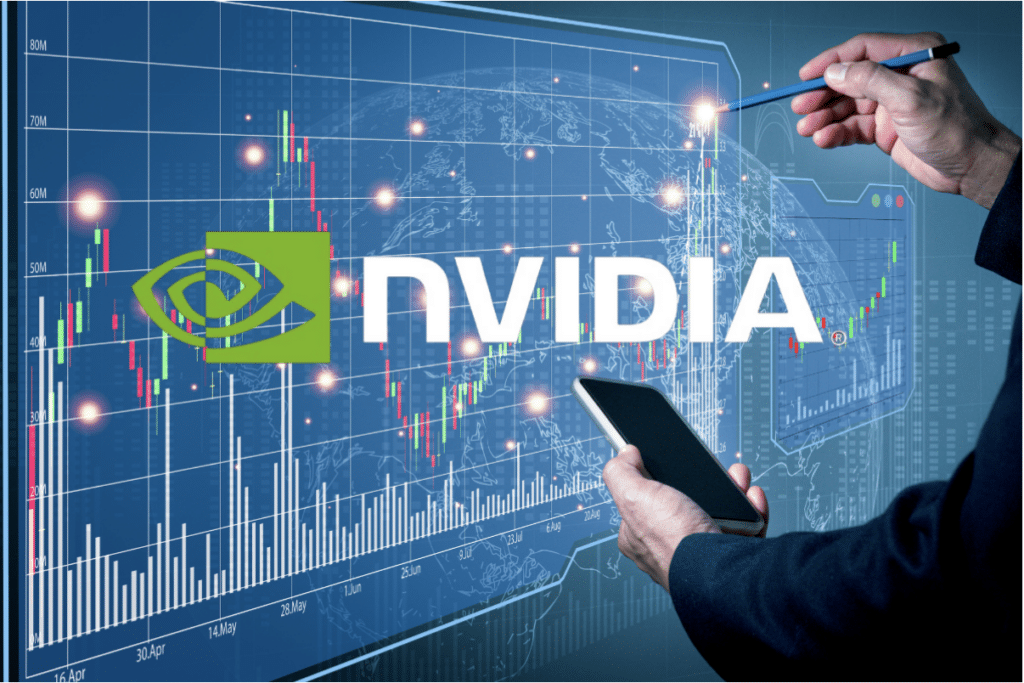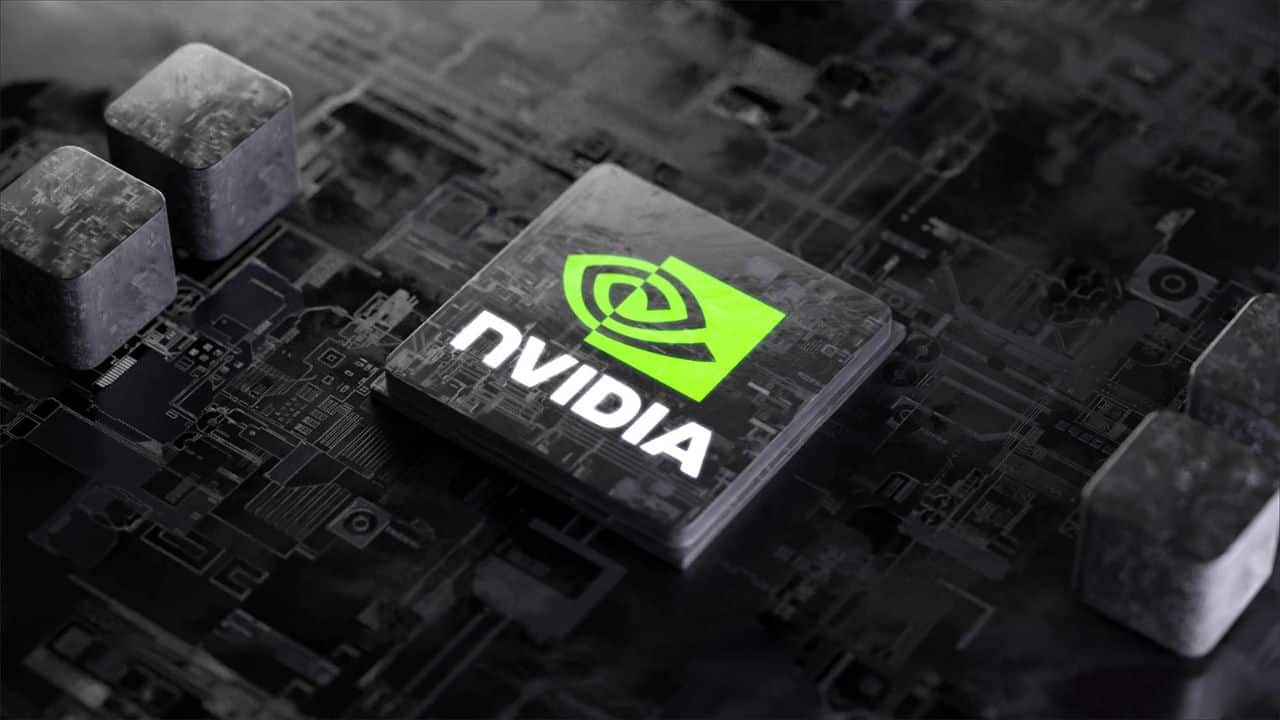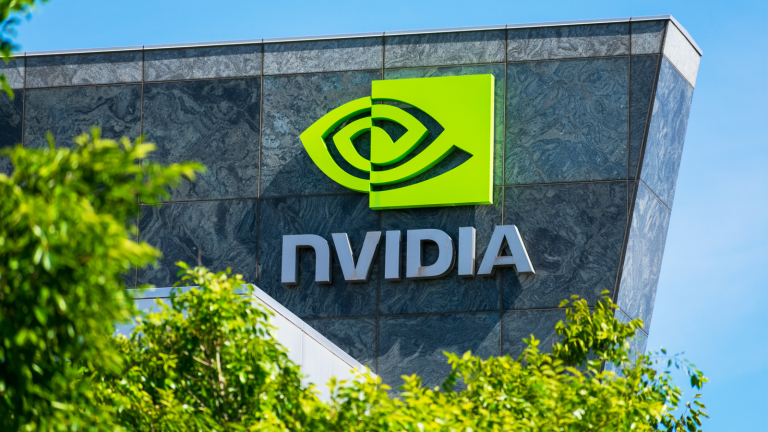Nvidia Bets Big On AI Future With Exceptional Results And $25 Billion Stock Repurchase
Nvidia has defied predictions, presenting a quarterly revenue forecast that far outpaces expectations. This astonishing achievement has been propelled by the fervent demand for its chips, driven by the ongoing artificial intelligence (AI) boom. Similarly, Nvidia's audacious move to initiate a $25 billion stock buyback program has sent waves through the market, igniting optimism about the company's future prospects.

Nvidia surpassed all expectations in its quarterly revenue projection on Wednesday, fueled by the surging demand for its chips driven by the artificial intelligence (AI) boom. Alongside this, the company announced a massive $25 billion stock buyback program, leading to a significant surge in its share prices during after-hours trading.
Nvidia’s revenue forecast greatly exceeded predictions by several billion dollars, showcasing the robustness of the generative AI trend, powered predominantly by Nvidia’s chips. This trend, characterized by AI technologies capable of human-like reading and writing, shows no signs of waning.

The $25 billion stock repurchase plan unveiled by Nvidia further enhances its position, especially since the company’s shares have already tripled in value over the year. This impressive growth has propelled Nvidia to become the world’s first trillion-dollar chip enterprise, with investors positioning the company as a primary beneficiary of the ongoing AI surge.
With analysts estimating a demand-supply gap of at least 50% for Nvidia’s sought-after AI chips, this imbalance is projected to persist for several quarters to come.
Jensen Huang, Nvidia’s CEO, emphasized the global shift towards accelerated computing and generative AI. He highlighted the transition from general-purpose to specialized computing, underlining the company’s pivotal role in this transformative journey.

The value of Nvidia’s shares from Santa Clara, California, skyrocketed by 9.6% in post-market trading, hitting an unprecedented all-time high.
However, Nvidia’s remarkable growth for the quarter was not solely attributed to its chips; the entirety of its AI systems, encompassing a wide array of components including memory chips and tens of thousands of other parts, contributed significantly to this expansion.
Nvidia’s impressive report exerted a positive influence on the shares of other major technology firms and AI-related entities. Microsoft saw a 1.9% surge, Meta Platforms experienced a 2.1% rise, and Palantir Technologies enjoyed a substantial 4.6% surge in extended trading on the same day.
Daniel Ives, an analyst at Wedbush Securities, described the results as a watershed moment for the tech sector, one that would have enduring effects throughout the year.
From startups focused on AI to established cloud service providers like Microsoft, all are vying for access to more Nvidia chips. Additionally, Chinese companies are displaying heightened demand, racing to accumulate chip stocks before potential U.S. export restrictions materialize.
Nvidia’s financial chief, Colette Kress, assured analysts that any potential U.S. export curbs on AI chip sales to China would not have an immediate impact on the company’s outcomes. She emphasized that such restrictions could lead to the permanent loss of opportunities for the U.S. industry in a crucial market.
The company’s projection for the third quarter anticipates revenue of approximately $16 billion, with a variation of plus or minus 2%. This surpasses the average estimate of $12.61 billion from analysts surveyed by Refinitiv.
During the second quarter, Nvidia’s adjusted revenue reached $13.51 billion, outperforming estimates of $11.22 billion.

Refinitiv data reveals that the company’s data center business achieved a remarkable 141% growth, reaching $10.32 billion in the quarter ending on July 30. This impressive figure surpassed analyst predictions by more than $2 billion.
Insider Intelligence senior analyst Jacob Bourne noted that these Q2 results underscore Nvidia’s dominant position in harnessing the momentum of AI. He emphasized the significance of overcoming supply chain challenges to scale up production as global demand for Nvidia’s chips intensifies.
Nvidia is making substantial investments to ensure a stable supply. The company reported a 53% increase in inventory commitments, amounting to $11.15 billion in the previous quarter. This rise can be largely attributed to the long-term supply needs for the company’s data center chips.
Refinitiv estimates suggest that Nvidia’s data center segment’s revenue could expand to around $40 billion by its fiscal year 2025. This growth is driven by Nvidia’s competitive edge in AI chips and related technologies, which power innovative products like ChatGPT.
While Advanced Micro Devices, Nvidia’s competitor, is expected to gain some market share with its AI chips, Nvidia maintains an advantage with its software, particularly its CUDA platform, which analysts believe is ahead of AMD’s ROCm.

Strong On AI
Amidst weak sales for chips designated for personal computers and data centers, the AI sector shines as a beacon of growth. Both cloud computing companies and startups are actively investing in AI-related chips, contributing to Nvidia’s success along with other companies like Broadcom and Marvell Technology.
Analysts predict that AI spending will continue to expand at the expense of traditional server equipment.
Nvidia’s gaming segment also posted strong revenue growth, reaching $2.49 billion, surpassing estimates of $2.4 billion according to Refinitiv data.
Excluding exceptional items, Nvidia achieved earnings of $2.70 per share during the second quarter, exceeding Refinitiv’s estimate of $2.09 per share.
For the ongoing third quarter, Nvidia projects an adjusted gross margin of 72.5%, with a range of plus or minus 50 basis points. In contrast, analysts’ average forecast for gross margin stands at 70.4%, as per Refinitiv data.
Nvidia’s $25 Billion Wager on the Prolonged AI Boom
CEO Jensen Huang expressed his confidence that the AI surge will extend well into the following year. To underscore this optimism, Nvidia initiated what could be one of the largest individual bets in the tech industry to date.

The company’s sales projections vastly exceeded Wall Street’s anticipations. Additionally, the announcement of a $25 billion stock repurchase demonstrates Nvidia’s conviction in its undervaluation.
Despite the fact that Nvidia’s share price has tripled over the year, its price-to-earnings multiple has decreased from 60 to around 43 following analysts’ revised earnings estimates in May.
Microsoft disclosed that its capital expenditures, including a substantial investment in Nvidia hardware, will continue to rise. The company has also dedicated $10 billion to OpenAI.
Other major players like Meta Platforms, Amazon.com’s AWS division, and several others have collectively invested tens of billions of dollars in AI-related hardware and products.
Nvidia’s robust chip demand has provided the financial resources for this investor-centric move. In its second quarter, the company reported an adjusted gross margin increase to 71.2%, a notable achievement given that most semiconductor companies maintain margins between 50% and 60%.
Summit Insights Group analyst Kinngai Chan commented that Nvidia’s inventory of $4.32 billion appears to be on the lower side. Chan anticipates that Nvidia will continue to surpass the projected $16 billion revenue guidance for the October quarter, driven by the persistent mismatch between demand and supply.
However, some analysts remain cautious about unlimited demand.
Dylan Patel from SemiAnalysis noted that many tech companies are heavily investing in Nvidia’s GPUs without a clear strategy for monetizing products developed with these chips.
Patel suggests that this phase of overinvestment will eventually fade as the true utility of these chips becomes clearer, even though certain players will likely persist in accelerating their investments.
While Huang refrained from speculating on the AI boom’s duration beyond the coming year, he stressed the criticality of securing supplies as Nvidia’s primary risk.
Nvidia highlighted that its HGX system, a comprehensive computer built around Nvidia’s chip, was the primary sales driver in this quarter. The complexity of this system, consisting of numerous components, can lead to shipment delays if any part is missing.
Huang emphasized the intricate nature of Nvidia’s supply chain and the collaboration required for success. He highlighted that the system is much more than just a GPU chip—it encompasses 35,000 components, weighs 70 pounds, and costs $200,000.
In a concluding statement, Huang said, “It’s hard to say how many quarters are ahead of us, but this fundamental shift will not end. This is not a one-quarter thing.”
The Last Bit, Nvidia’s recent accomplishments symbolize its profound influence in the technology landscape. The company’s stellar financial performance, fueled by the AI momentum, underlines the indispensability of its chips in shaping the future of computing.
As the AI revolution gathers momentum, Nvidia’s commitment to innovation and strategic investment fortify its position as a leader in the field.
With shares soaring and a visionary approach that encompasses both technology and investment, Nvidia is poised to remain at the forefront of the AI frontier for the foreseeable future.




